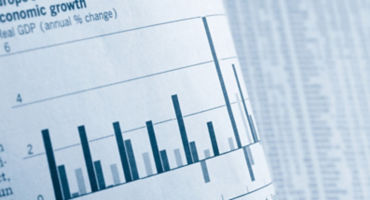Investment implications
Investors may want to consider moving out of cash into longer maturities sooner rather than later. Even though some bonds have lower yields than cash, they've benefited materially more than cash in the past six Fed rate-hiking cycles on average. Since the market anticipates the next easing cycle, much of the positive returns accrue around the time of the last hike.
Corporate bonds have a better average return profile than Treasuries and the bond index. Because corporate bonds have higher yield and spread-tightening potential, they've tended to outperform other fixed-income sectors.
An incremental step out of cash into bonds isn’t as big a risk as one might expect. Even if the Fed keeps hiking, our analysis indicates that bond returns would be comparable to cash in the short term, and bonds would outperform longer term based on past cycles.
BLOOMBERG®” and the Bloomberg indices listed herein (the “Indices”) are service marks of Bloomberg Finance L.P. and its affiliates, including Bloomberg Index Services Limited (“BISL”), the administrator of the Indices (collectively, “Bloomberg”) and have been licensed for use for certain purposes by the distributor hereof (the “Licensee”). Bloomberg is not affiliated with Licensee, and Bloomberg does not approve, endorse, review, or recommend the financial products named herein (the “Products”). Bloomberg does not guarantee the timeliness, accuracy, or completeness of any data or information relating to the Products.
ICE data, its affiliates and their respective third-party suppliers disclaim any and all warranties and representations, express and/or implied, including any warranties of merchantability or fitness for a particular purpose or use, including the indices, index data and any data included in, related to, or derived therefrom. Neither ICE data, its affiliates nor their respective third-party suppliers shall be subject to any damages or liability with respect to the adequacy, accuracy, timeliness or completeness of the indices or the index data or any component thereof, and the indices and index data and all components thereof are provided on an “as is” basis and your use is at your own risk. ICE data, its affiliates and their respective third-party suppliers do not sponsor, endorse, or recommend Wellington Management Company LLP, or any of its products or services.













Monthly Market Snapshot — March 2024
Continue readingBy
Brett Hinds
Jameson Dunn